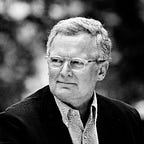Networked leadership
Leading is helping people to make sense of the world.
A lot of management research has focused on the leadership attributes of individuals. Leading and following in the traditional sense have seen the leader making people follow him or her through charisma, motivation and rewards. The leader also decided who the followers should be. The relationship was asymmetric.
Leading and following when seen as a two-sided, symmetric network relationship, not as attributes of individuals, follow a very different dynamic. Leading in this new sense is not position-based, but contextual, temporal and recognition based.
The leader is someone people trust to be at the forefront in the area, which is temporally meaningful for them. People recognize as the leader someone who inspires and enables them in the present. People, the followers, decide whom to follow, why, when and for how long. Another difference from traditional management is that because of the diversity of contexts people necessarily link to, there can never be just one “boss”. Thus, an individual should always have many leaders as a default state.
You might even claim that from the point of view taken here, it is highly problematic if a person only has one leader. It would mean attention blindness and artificial scarcity as a default state.
We are now at the very beginning of trying to understand leadership in the new contextual, symmetric framework. The relational processes of leading and following should be seen as temporal and responsive, on the Internet, on Twitter, but, in society and also inside companies.
These leadership patterns can be restricting or enabling. Knowing in the brain is a set of neural connections that correspond to our patterns of communication. We don’t only connect with people; we link with topics, with information, with technology, and in the future with machine learning. The challenge is to see all the filters and linkages as communication patterns that are either keeping us stuck, running in circles or opening up new possibilities. We need new skills of dynamically connecting to new people and enriching information. This is a growing challenge for our tools. Social tools have developed tremendously on the publishing and social sharing side. The next developments need to take place on the social sense-making side.
As Stephen Downes writes about learning, following is at best a process of active movement through observing and simulating desired practices. It is about growing the network and about personal growth at the same time. Leading is doing one’s work in an inclusive and transparent way and being openly reflective. Perhaps leading is going to resemble teaching?
Leading is then helping people to make sense of the world.
